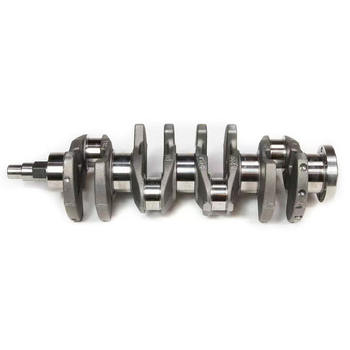Introduction
The crankshaft and camshaft are two vital components in an internal combustion engine, working together to convert linear motion into rotational motion and vice versa. However, to truly appreciate their importance, it's essential to understand the unique roles they play and how they differ from one another.
What is a Crankshaft?
A crankshaft is a long, cylindrical component that translates the reciprocating motion of the pistons into rotational motion. This allows the engine to produce power and transmit it to the wheels, propelling the vehicle forward. The crankshaft is typically made of cast iron or steel and features several crank throws, which are offset journals that connect to the piston's connecting rods.
Crankshaft Function
In my experience, the crankshaft's primary function can be summarized as follows:
- Convert linear motion into rotational motion
- Transmit engine power to the transmission
- Balance the engine's forces
What is a Camshaft?
A camshaft is a cylindrical rod with eccentric lobes or cams that control the opening and closing of the engine's valves. By rotating at half the speed of the crankshaft, the camshaft ensures that the intake and exhaust valves open and close at the appropriate times during the engine's four-stroke cycle.
Camshaft Function
The camshaft's main responsibilities include:
- Operate the intake and exhaust valves
- Maintain proper valve timing
- Regulate airflow into and out of the engine
Key Differences Between Crankshaft and Camshaft
Now that we've established the roles of the crankshaft and camshaft, let's explore the key differences that set them apart:
1. Shape and Design
Crankshafts are typically longer and more robust than camshafts, with a series of crank throws and counterweights to balance the engine's forces. On the other hand, camshafts are more slender and feature lobes or cams that control the valves' movement.
2. Speed and Rotation
The crankshaft rotates at engine speed, while the camshaft rotates at half that speed. This difference in speed is essential for maintaining the proper timing of the engine's valves.
3. Function and Purpose
As we've discussed, the crankshaft is responsible for converting linear motion into rotational motion and transmitting power to the transmission. In contrast, the camshaft regulates the engine's airflow by controlling the opening and closing of the intake and exhaust valves.
Final Thoughts
To be honest, understanding the differences between the crankshaft and camshaft is absolutely necessary for anyone interested in engines or automotive mechanics. By recognizing their unique roles and functions, you'll gain a deeper appreciation for the intricate dance of components that make your engine run smoothly. So the next time you're under the hood, take a moment to appreciate these hardworking components and the essential jobs they perform.




